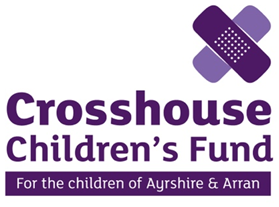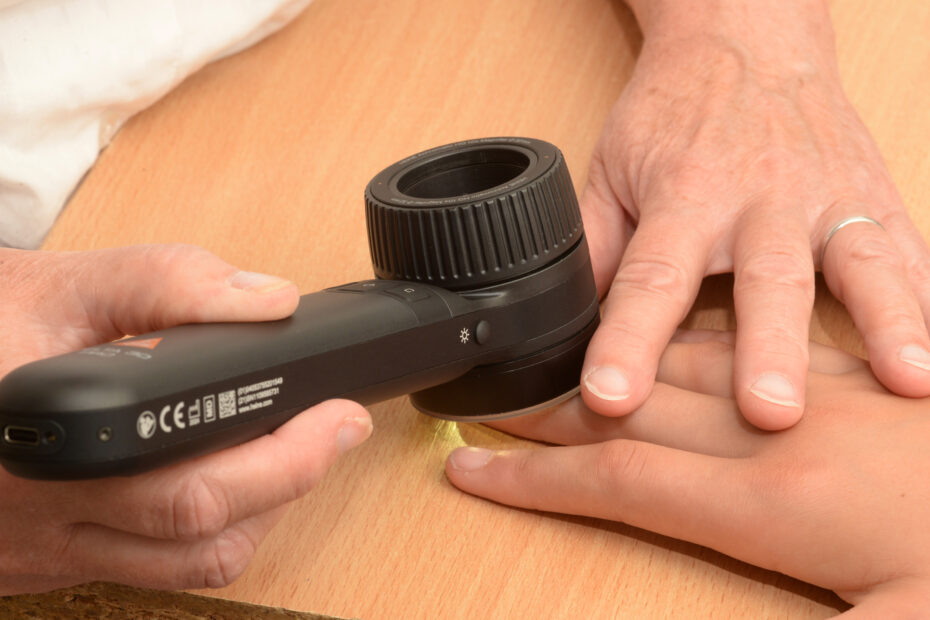Published on behalf of Crosshouse Children’s Fund.
Children living with conditions such as childhood arthritis or connective tissue disease often experience a wide range of symptoms, from swollen joints and rashes, to fatigue, headaches, or changes in blood pressure. Diagnosing these complex conditions can be challenging, and doctors rely on many pieces of information to form a clear picture. Thanks to support from our generous donors, a new dermatoscope, funded by Crosshouse Children’s Fund is now helping to provide that vital clarity for young patients at University Hospital Crosshouse.
The dermatoscope is a specialist piece of equipment which allows doctors to examine the very small blood vessels at the base of the nails, known as nail bed capillaries. Changes in the shape or appearance of these vessels can be an important sign of inflammation, which helps clinicians identify connective tissue disease and other rheumatology conditions.
“Diagnosing rheumatology conditions in children is like building a jigsaw puzzle. Blood tests can be helpful, but they aren’t always diagnostic. By examining the nail bed capillaries with the dermatoscope, we can add another important piece to the overall picture,” said Dr Bridget Oates, Consultant Paediatrician at NHS Ayrshire & Arran. Previously, staff had to rely on equipment like an ophthalmoscope, designed for examining eyes, which does not provide the same clarity. The dermatoscope now makes diagnosis more accurate and timely.
Once a diagnosis is made, treatment can begin to ease symptoms and improve quality of life. For many children, rheumatology conditions are lifelong, so the dermatoscope will also play an important role in monitoring their health over time.
“We are delighted that the charity saw fit to fund this equipment. It ensures children in Ayrshire and Arran are receiving the best possible care,” added Dr Bridget Oates, Consultant Paediatrician at NHS Ayrshire & Arran.
This new equipment is already making a difference, helping doctors to see more, know more, and give young patients the very best chance of living well with their condition.

